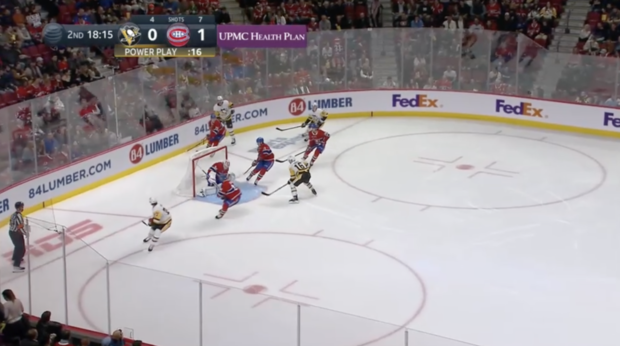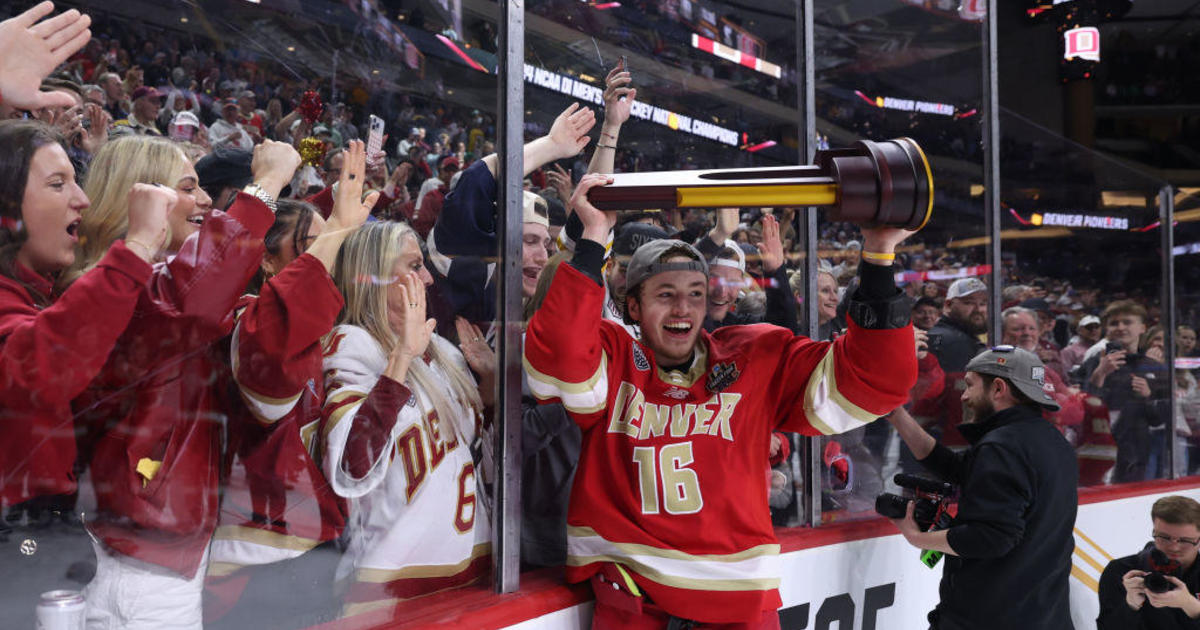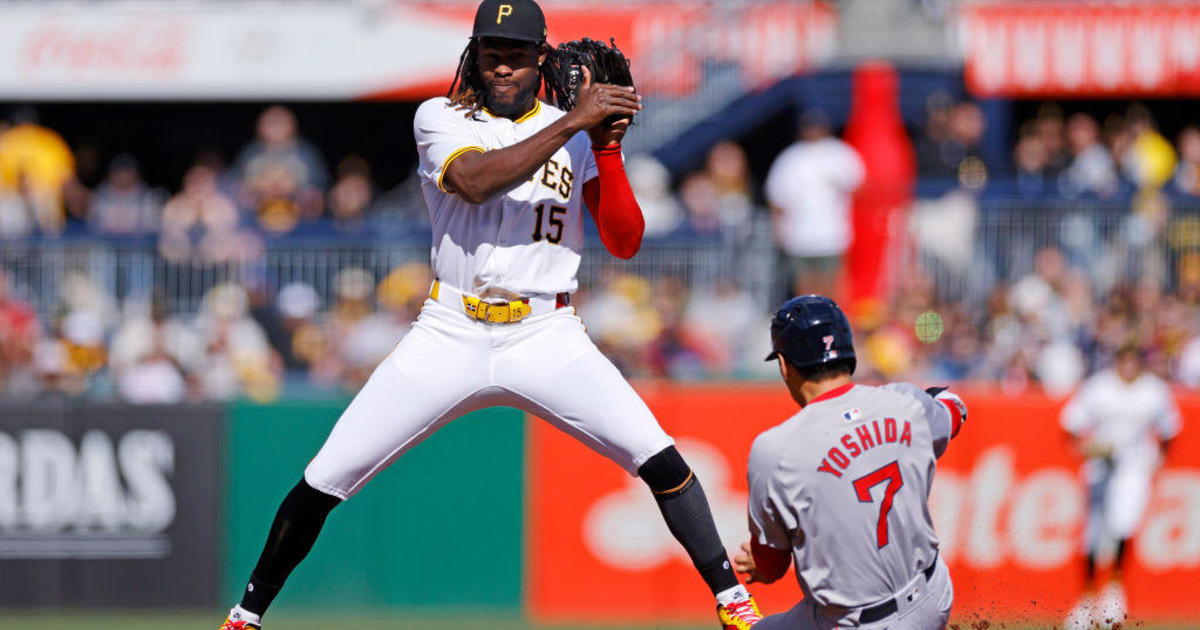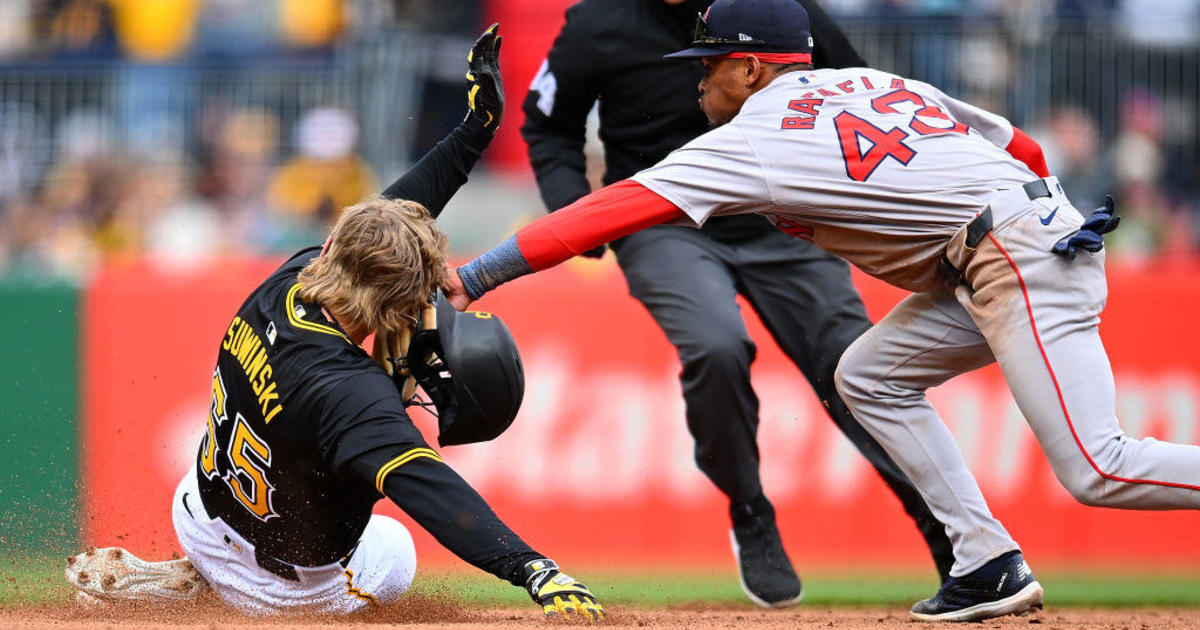Penguins Perspectives: Recharging the power play
PITTSBURGH (KDKA) – It's not exactly a secret right now what's ailing the Penguins, despite getting back into the win column and out of their funk recently, and it involves a two-minute stretch where they look…well, powerless, so to speak.
Yes, the power play.
When we were all riding the wave of the Penguins' hot start against Arizona and Tampa Bay, one of the things that helped drive their start was special teams.
They scored two power-play goals in each for a total of four and had 10 opportunities combined in those two games, good for 40 percent.
For reference, the best power play in the NHL last season was Toronto with 27.3 percent after a full 82-game season.
Obviously, clicking at 40 percent for an entire season is unrealistic, the best power play percentage in NHL history was the 1977-78 Montreal Canadiens and they topped out at 31.9 percent.
Now, I know I said in an earlier Penguins Perspectives to evaluate the season on a rolling five-game trend rather than micro-analyzing each game. So, two games where they scored a total of four goals weren't exactly indicative of any larger trends, but to quote the great Stephen A. Smith:
HOWEVER…
In the 14 games since then, they've scored…six. Six out of a possible 42 chances, good for 14 percent.
The team currently sits 22nd in the NHL with a power play percentage of just 19.2.
I've regurgitated a lot of numbers up to this point, so rather than just look at the spreadsheets, let's take a look at the tape and see what made the power play work in the first two games and what has caused it to sputter since.
This was the second power-play goal of the season thanks to Evgeni Malkin and it's a very simple, straightforward play. They win the face-off, get the puck to the point, work it down low, Malkin cuts through the middle, finds Crosby sneaking in, Crosby puts it on the net for a rebound, and then Geno finishes the play.
Simple enough.
Now, let's go to game two of the season and power play goal number four of the stretch.
This time, the Penguins work the puck from low to high and as soon as the puck makes its way to Crosby up top, the Penguins read Tampa's 1-1-2 formation. While Letang leaves the zone to act as a safety valve should Tampa press up top, Guentzel swoops through the circle to the slot once he knows Sid is shooting to be the second option for a rebound, Malkin stays on the right side as an outlet for a one-timer, and Rust sets up shop right in front of the net.
With the traffic and everyone in place, Crosby sends a shot on the net for a rebound or tip and Rust does just that.
Two goals, one theme.
Put the puck on the net, make sure you have a presence in the slot or in front of the net, and use the advantage to, well…your advantage.
The Penguins' top power-play unit is not lacking in skill nor will. It's comprised of Bryan Rust, Sidney Crosby, Evgeni Malkin, Jake Guentzel, and Kris Letang. Five players who all have tremendous work ethics and the skill to go with it.
However, in watching their Friday night matchup with Toronto, a team struggling in the penalty kill department so far this year, they did not take advantage.
As Steve Mears, the Penguins play-by-play man on AT&T Sportsnet, said as their lone opportunity got underway: "Not to sound like the drunk fan in the F balcony at the Igloo, but they got to shoot the puck."
He's correct.
The Penguins' top power-play unit in their only attempt against Toronto did not muster a single shot on goal.
As this power play has slumped, the team has continually mustered only single-digit shots on goal in multiple power play opportunities. It's not to say that the Penguins should constantly look to shoot from everywhere, especially with how fast the league is now, and giving up odd-man rushes while on the power play is a recipe for total disaster, but as Mike Sullivan likes to say, the Penguins should have a shot-first mentality.
Now, that brings us to another issue.
Decision making.
Right here, the Leafs got a clear and the Penguins went all the way back to their defensive zone for the breakout and as you can see, the Leafs are pressing at the blue line. Here, it's on the power play to recognize that, and rather than have Malkin and Rust sitting at the blue line waiting for a controlled zone entry, put the puck into the corner and have those two attack the defense in order to neutralize that point of defense from Toronto.
In speaking of decision-making, the Penguins did score a goal in an overtime loss on Saturday against Montreal.
That said, it wasn't the top unit. It was the second unit that again produced a goal.
While it was a broken play that led to the goal, there are a couple of things I want to highlight here.
First, the zone entry:
Rakell gets the puck to Petry who is streaking down the wing, but unlike the above screenshot from Toronto, it's what happens away from the puck that gets Petry a clean zone entry. Jeff Carter in the middle of the ice is a threat to the Canadiens' defensemen because, as you can see, there's a sizable gap between them and if Carter gets the puck, he has a clear path to the goal (even though the above screenshot shows Carter well covered, we picked the point in which the Penguins gain the zone), which in turn causes them to back off the blue line, giving Petry the entry.
Secondly:
The Penguins are not about to make life easy on goaltender Jake Allen. All eyes are on the front of the net as soon as they enter the zone. Petry gets the puck to Rakell who is streaking down the center lane with Zucker and as soon as this play develops, once Jeff Carter has done his job backing off the defense during the zone entry, he begins to swoop toward the net.
With a wide-open Zucker in front, Rakell with the puck near the middle of the ice, and Jeff Carter swooping toward the net, the Penguins now have a manpower advantage over the Canadiens, which will cause their penalty kill to scramble, and give the Penguins a scoring chance, nearly regardless of who has the puck.
While Petry's attempt to get the puck to Zucker ultimately winds up in the net for a power-play goal, if you freeze it right at that moment, the Penguins are playing 4-on-4 down low.
"But you said they have a manpower advantage!"
Here's how: All four Montreal penalty killers are below the bottom of the circle. Not in frame is the Penguins' fifth player, Danton Heinen who now has essentially the entire offensive zone to work. From there, he can either put a shot through serious traffic, slow the play down and let the power play go to work in the zone or join the play with no Montreal player left to neutralize him.
Should that be how the Penguins' top unit plays? Definitely not consistently, but maybe temporarily in order to find a rhythm, get some confidence, and start producing at a rate their power play unit with that much talent should.
To wrap it all up, for the Penguins' power play to begin showing some life, a shoot-first mentality is required, getting to the front of the net will be paramount, and making sure you're gaining clean entry to the offensive zone to make those opportunities become available will all be part of the recipe.
It's called the man advantage and it's time for the Penguins to take advantage.






